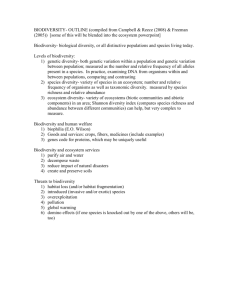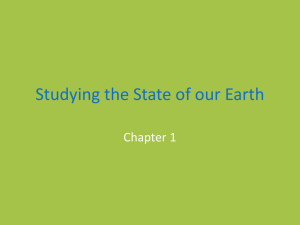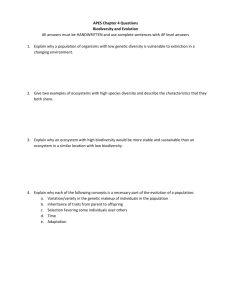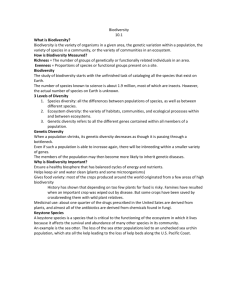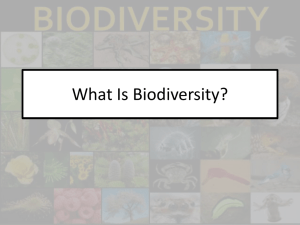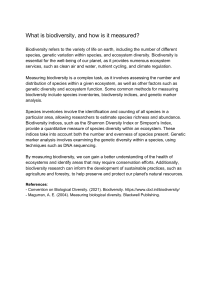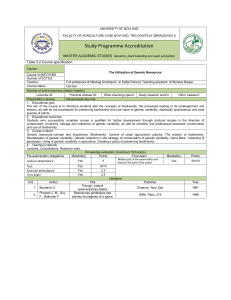Biodiversity Handout
advertisement
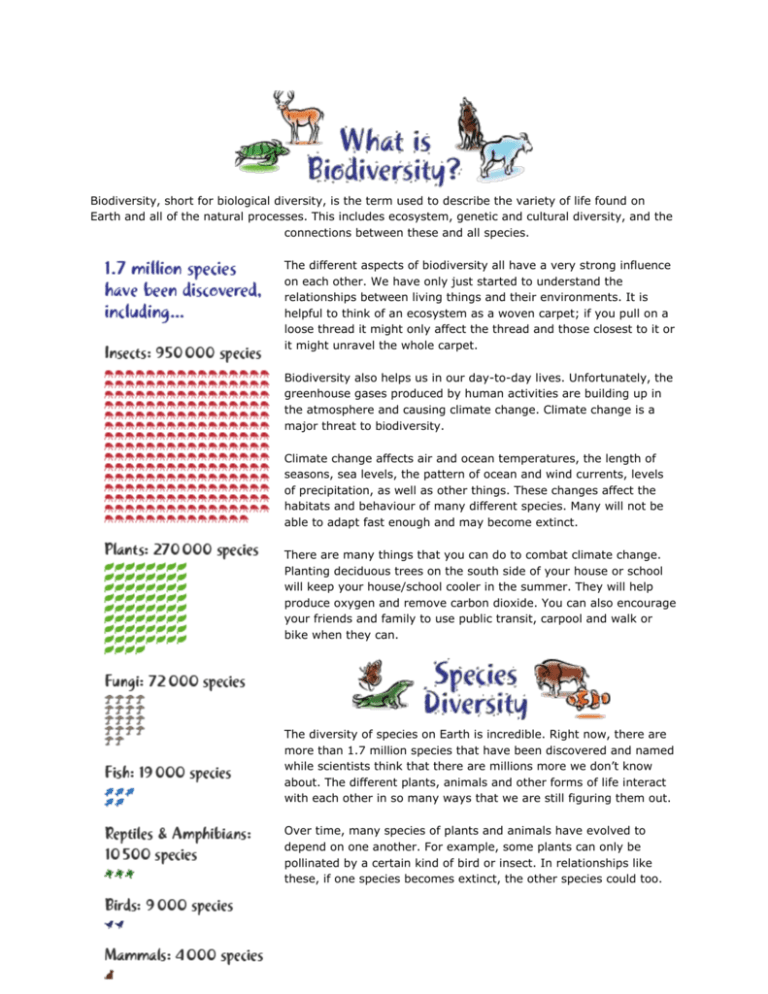
Biodiversity, short for biological diversity, is the term used to describe the variety of life found on Earth and all of the natural processes. This includes ecosystem, genetic and cultural diversity, and the connections between these and all species. The different aspects of biodiversity all have a very strong influence on each other. We have only just started to understand the relationships between living things and their environments. It is helpful to think of an ecosystem as a woven carpet; if you pull on a loose thread it might only affect the thread and those closest to it or it might unravel the whole carpet. Biodiversity also helps us in our day-to-day lives. Unfortunately, the greenhouse gases produced by human activities are building up in the atmosphere and causing climate change. Climate change is a major threat to biodiversity. Climate change affects air and ocean temperatures, the length of seasons, sea levels, the pattern of ocean and wind currents, levels of precipitation, as well as other things. These changes affect the habitats and behaviour of many different species. Many will not be able to adapt fast enough and may become extinct. There are many things that you can do to combat climate change. Planting deciduous trees on the south side of your house or school will keep your house/school cooler in the summer. They will help produce oxygen and remove carbon dioxide. You can also encourage your friends and family to use public transit, carpool and walk or bike when they can. The diversity of species on Earth is incredible. Right now, there are more than 1.7 million species that have been discovered and named while scientists think that there are millions more we don’t know about. The different plants, animals and other forms of life interact with each other in so many ways that we are still figuring them out. Over time, many species of plants and animals have evolved to depend on one another. For example, some plants can only be pollinated by a certain kind of bird or insect. In relationships like these, if one species becomes extinct, the other species could too. The complex relationships between species are often disturbed when organisms are transported to new places or a new element is introduced (for example, chemicals from pesticides). This can be by accident or on purpose. Sometimes they compete with species that are already there or they prey on them. It is also possible that they may have no effect on the native species. Here are a couple of tips • • • • • • • Never introduce an invasive plant species into an area it does not naturally exist Never release your exotic pets, including fish or turtles, into the wild Plant only native species Avoid using pesticides or chemicals on your lawns or in your garden. Genetic Diversity Genetics make individuals of the same species different from each other. If you look at the hair color of your friends or the different colors of apples in the grocery store you can see the small differences that genes make in members of the same species. It is important for groups of plants and animals, including people, to have genetic diversity. It allows groups to adapt to changes in their environment. This could be something like an outbreak of disease or a change in the climate. A larger group has more genetic diversity. This group will be stronger and better able to adapt to change.


